Remember how you used to make those scribbles at the back of your history book? How you wrote the name of your best friend? The doodled name of the favorite heartthrob and the latest crush? That's doodling in its most relaxing form.
As kids, we have all doodled. Then we grew up and lost this ability to communicate visually. Pictures speak a thousand words. The absence of visual literacy is a problem for everyone. All the ancient scripts are visual. But somehow, the modern man forgot this part of his brain. Ignoring any one method of communication makes us one-dimensional. Our brain has an easier time processing visual cues than words. Remember, we all learn to doodle even before we learn our alphabets! It's much more intrinsic than the written word.
In the book Living Colours, Natalie Goldman talks about this in much detail. When I write, I doodle first in my brain, then on pen and paper, and then I do research, etc.
The doodle on the page helps you brain dump more fluidly. The best thing about doodling is its fun. If you want to learn how to doodle a particular something, you can always check Google for inspiration. As kids, we doodle, as adults; we forget this visual skill. As writers, we don't use its superpower for everyday writing.
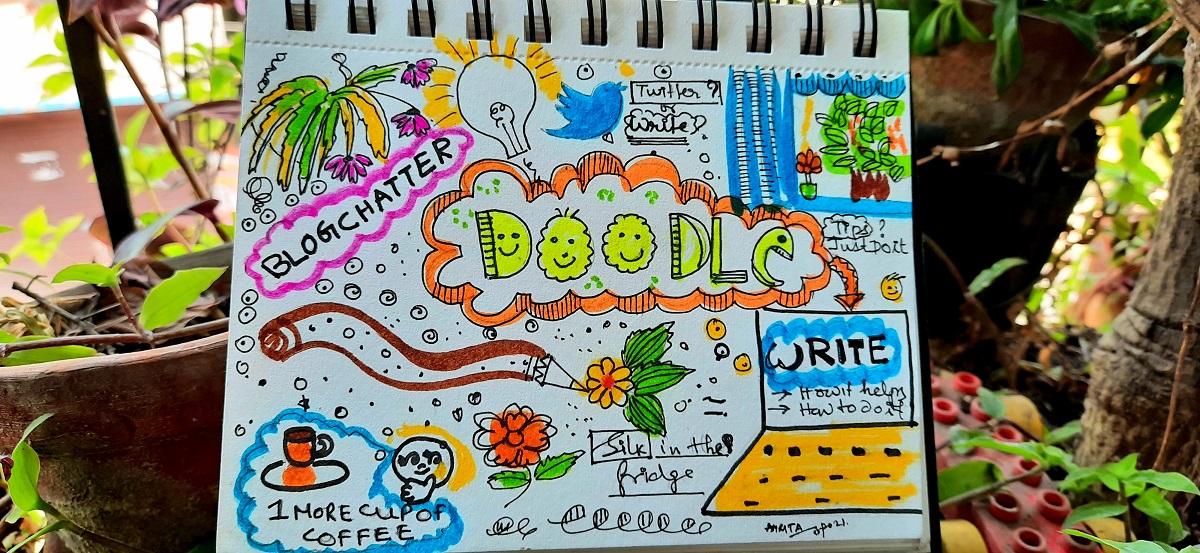
5 tips to leverage doodling to make writing easier.
1. Creative Flow
Doodling is an excellent method to quickly get into a creative flow state. It's way easier to feel calm and centered when you have drawn your thoughts on paper as speech bubbles, stick figures, arrow diagrams, or your characteristic.
2. No drawing skills? Not a problem
Unlike other works of art, doodling is not constrained by your skills but by your own individual process. I used to doodle many flowers and leaves at the corner of my textbooks. Even now, I make mandala doodles embellished with flowers when I am thinking actively.
3. Thinking out of the box
Doodling will help you think out of the box when you are in the ideation phase. It reduces the stress of coming up with the idea by letting your hand work while you think. It's like visual thinking, muscle memory for keeping on writing once you go past the doodle stage.
4. Big picture focus
It helps you find a focus for your thought. Your doodle will help you in big picture thinking; brain mapping, whatever you call it, are different forms of doodling. They are great for thinking about your settings for fiction and big picture overview for nonfiction. Doodling is a beautiful way to solve a problem visually. For fiction writers, this could mean the pictorial overview and for nonfiction is all about helping solve a problem.
5. Doodle your characters
Your characters are better fleshed out when you doodle about their likes, dislikes, personality quirks. The more detailed you doodle, the deeper your character sets. You end up knowing the personality and backstory of your characters' better.
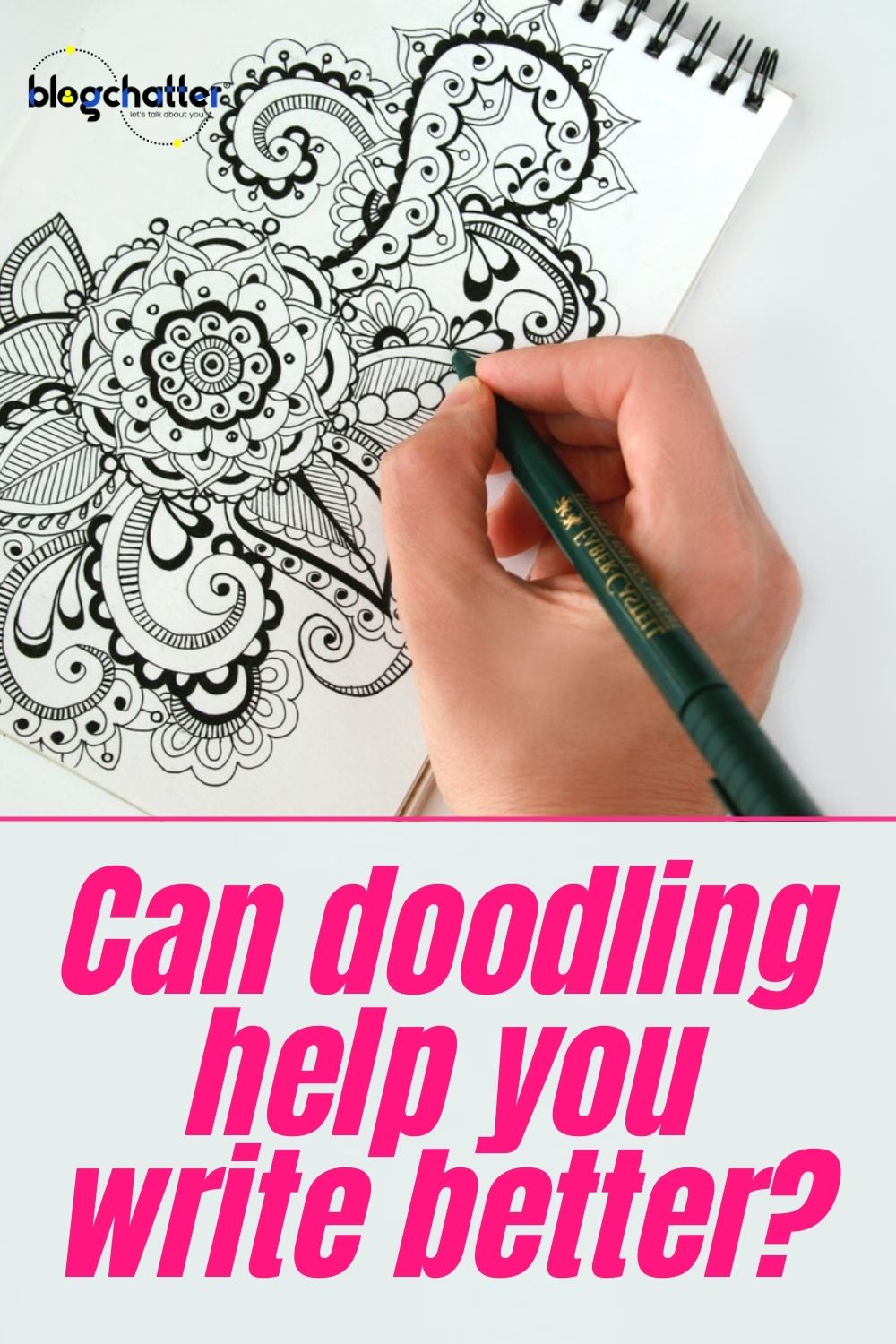
How to start doodling to write quicker?
When you doodle about a topic, write it down on paper. Find at least five/six things around the subject on the top of your mind. Then doodle them. Now start with that; those are your main subtopics around which you will structure the post. Doodle the different parts of those subtopics. Try to incorporate those words in a doodle. See how it goes.Your doodle is art in the making. You can use sketch pens, watercolors, stickers, or just a black pen works excellently too.
Original artwork for your blog? Don't worry, you can do it for practically all niches. This is where you need to start Googling to find out query words around that subtopic and the related doodles.
How elaborately you doodle will depend on you. I even doodled the third book from my fiction Krishna Mishra series, What happened at Gour, on a single piece of paper together with flower doodles on the side. That helped me think about the setting for my story. It's like plotting but more visual and fun.
Having fun means you have good ideas and you can write better. So what are you doodling next?

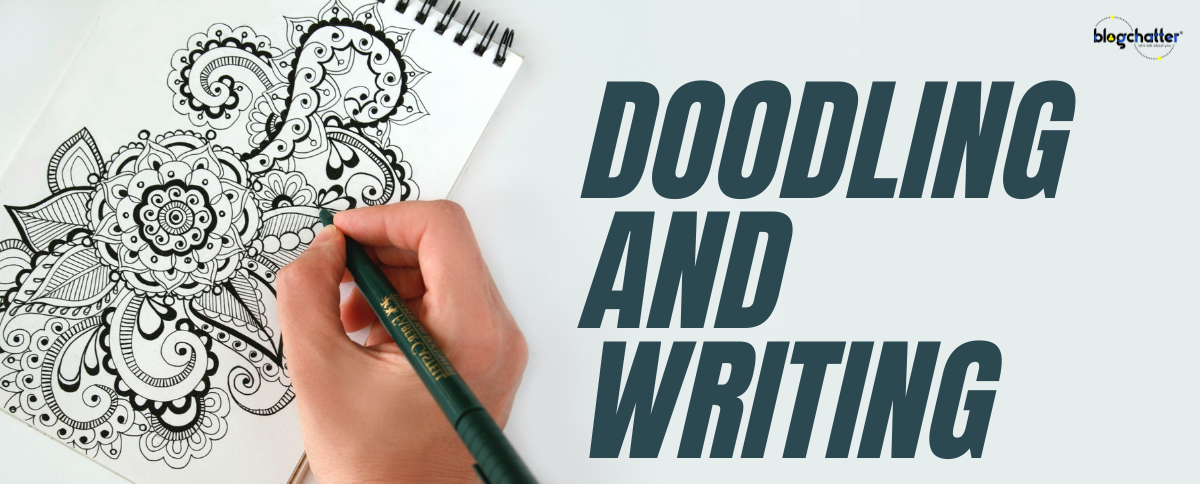
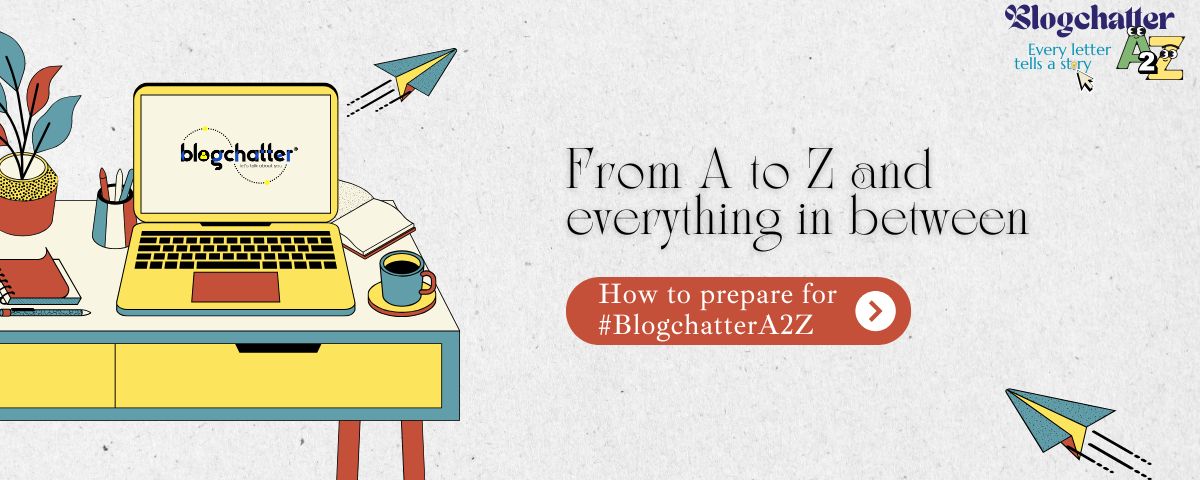



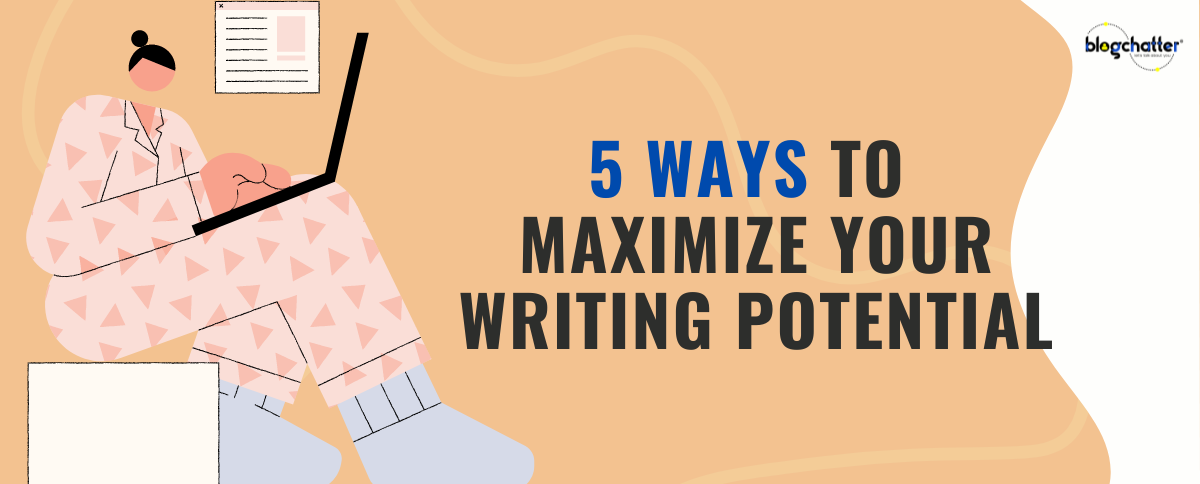
Comments
It's a really inspiring read. My eight-year-old son enjoys doodles. I had no idea that doodling could help us in writing more creatively and diligently.
Quite motivational and energetic at the start of day to read such beautiful blog!! Thanks a lot for this type of tea at the start of day. https://bloggingtogenerations.blogspot.com/
Doodle brings in creative juices
Very nice post and motivated me to start my doodling once again
doodles are great
Great Post Amrita
Such a helpful and motivating read
Before reading this post I strongly believed that doodling is related only to childhood. The child in me says start doodling again.